
Horizon Wings
Raptor Rehabilitation & Education
by the way its animals are treated." - Gandhi
PROGRAM BIRDS
Our program birds are raptors who can no longer be released due to either injuries or prolonged captivity. They are well-cared-for at our center, and we bring some of them to our educational seminars. You may also visit them on-site by scheduling a group or private program in advance. Please click on their photo below to be brought directly to a more detailed description of each one.
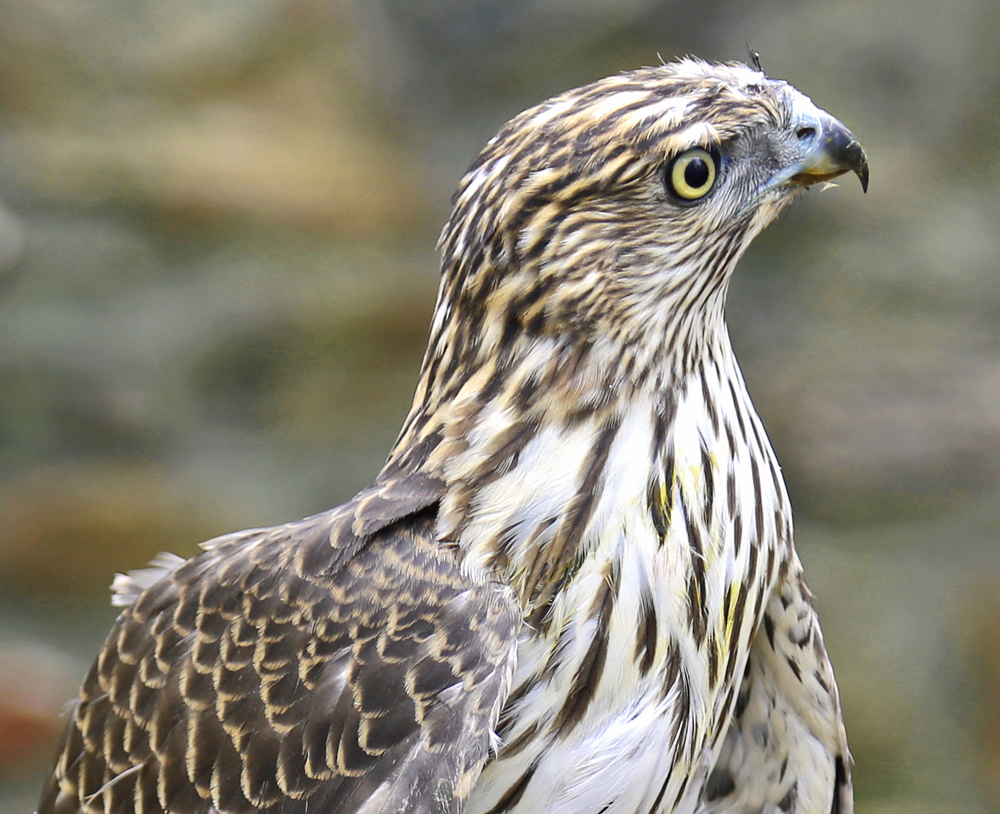
ADARA |
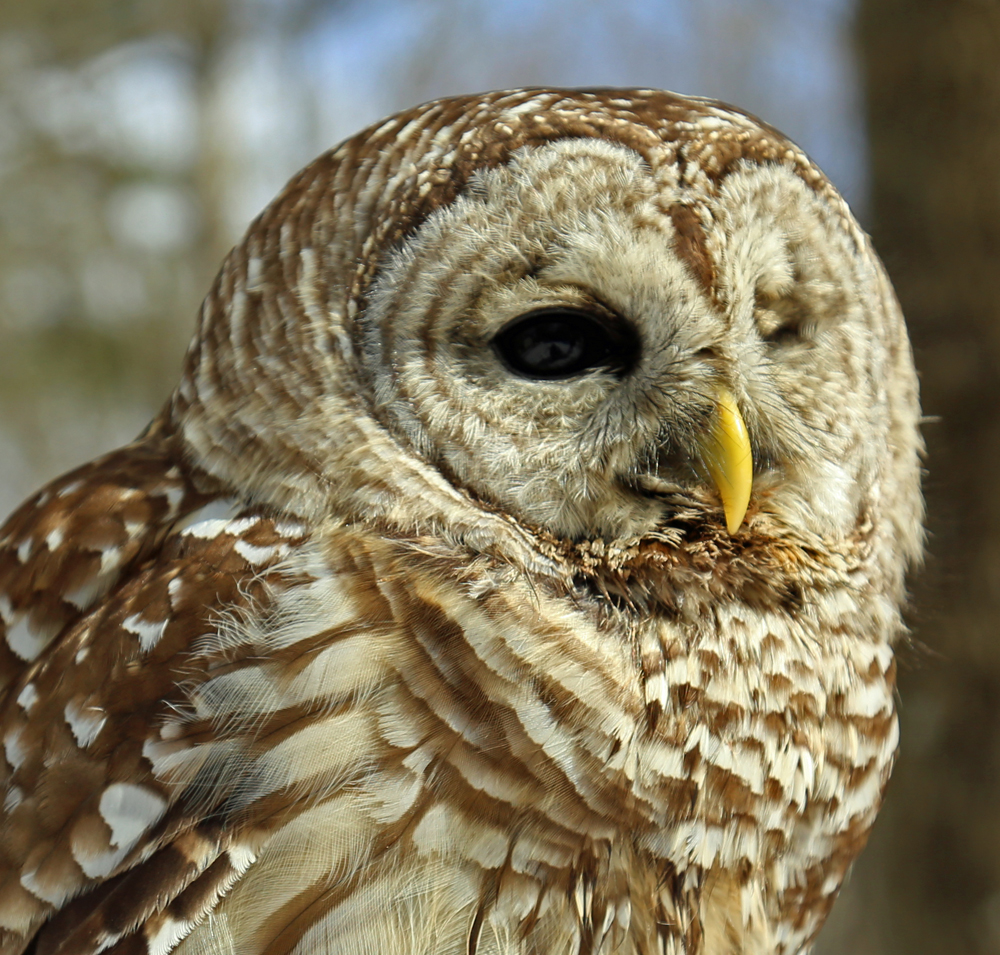
ASHA |
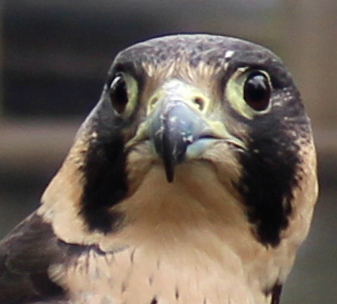
ATHENA |

ATKA |
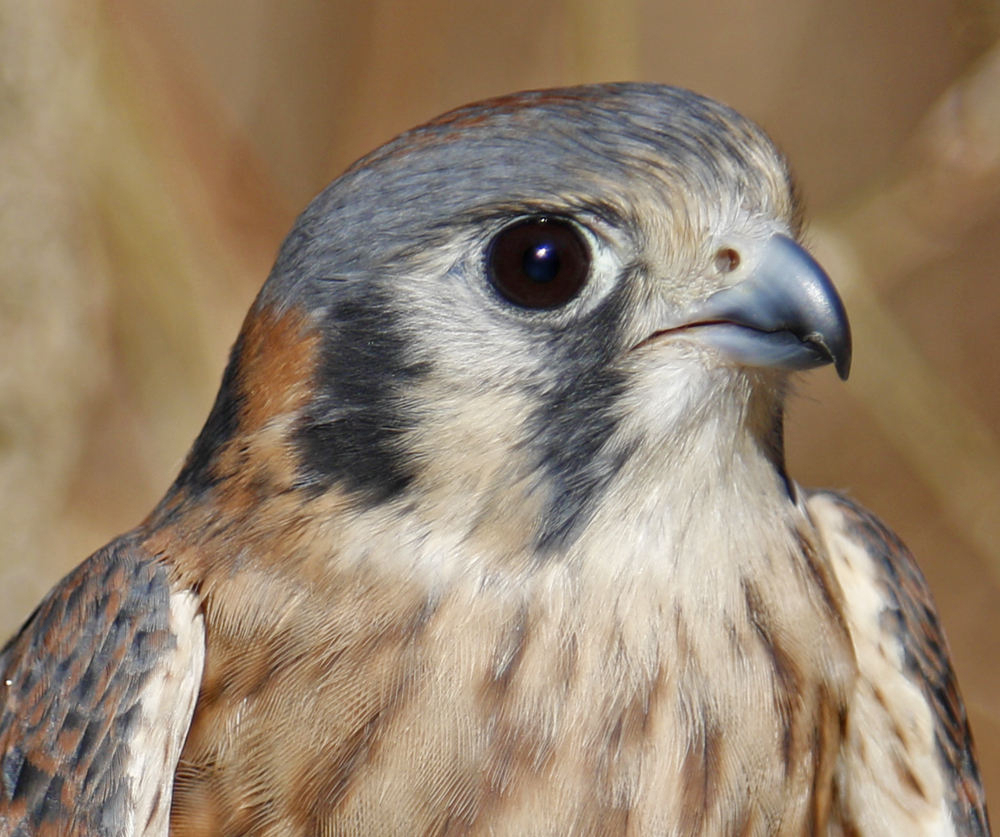
BREEZE |
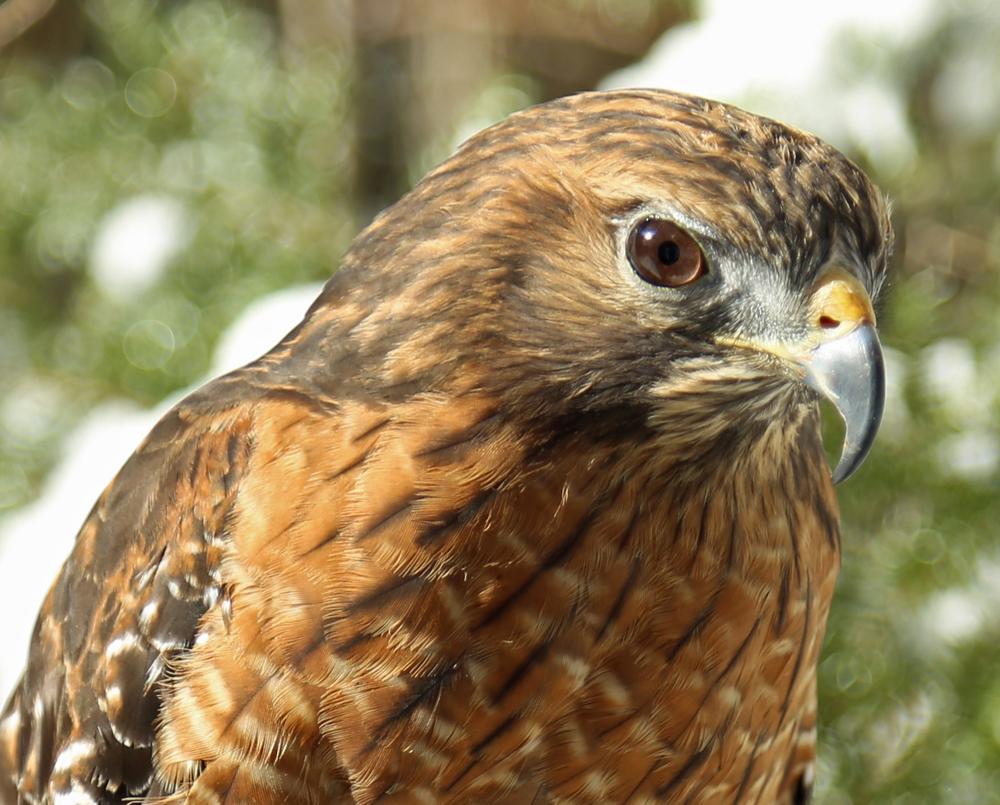
CESSNA |
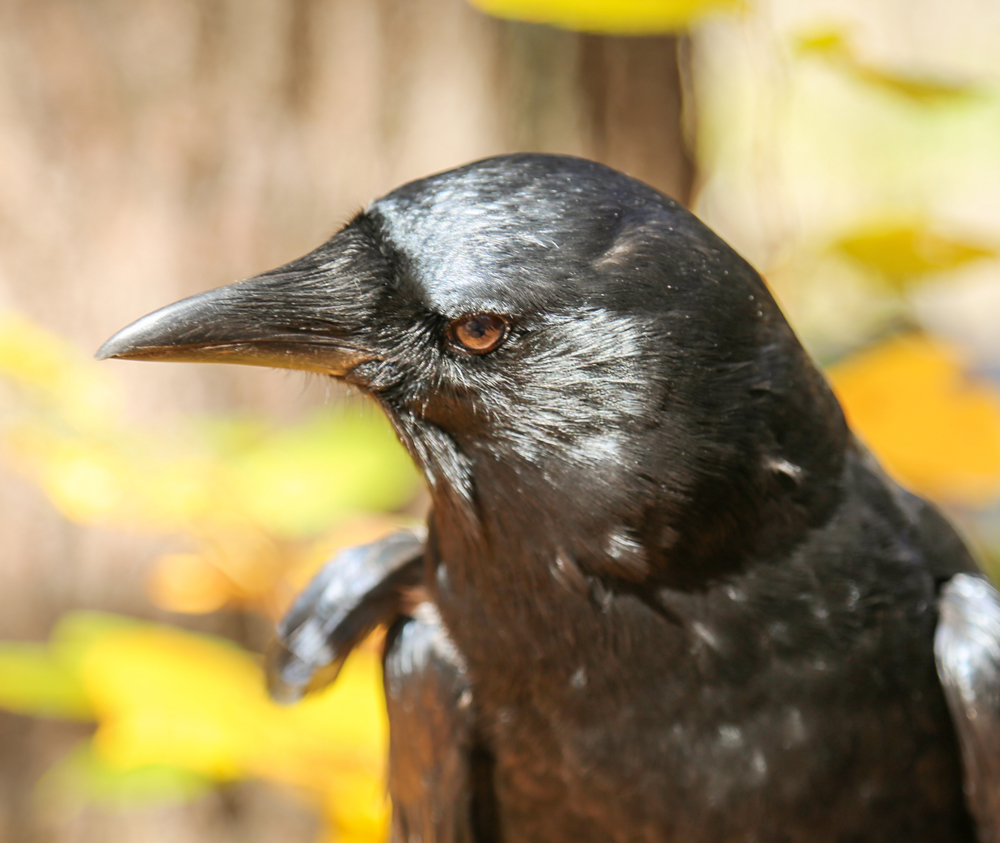
CORBIN |
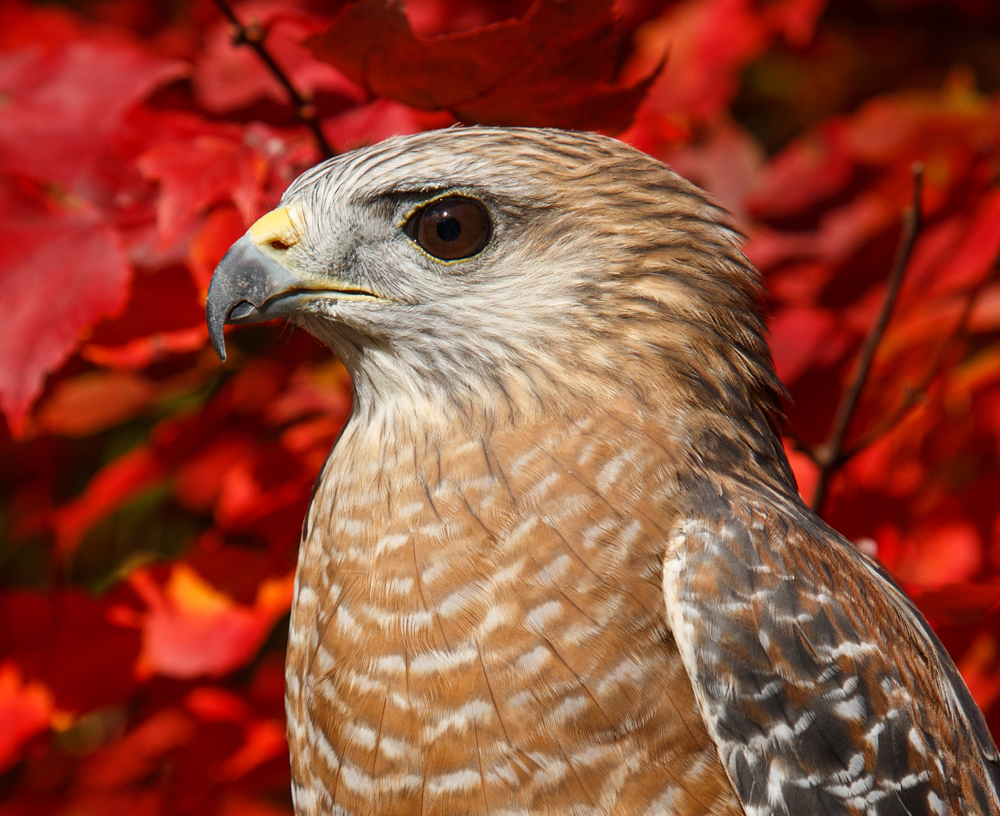
CYPRESS |

DAKOTA |

FINN |
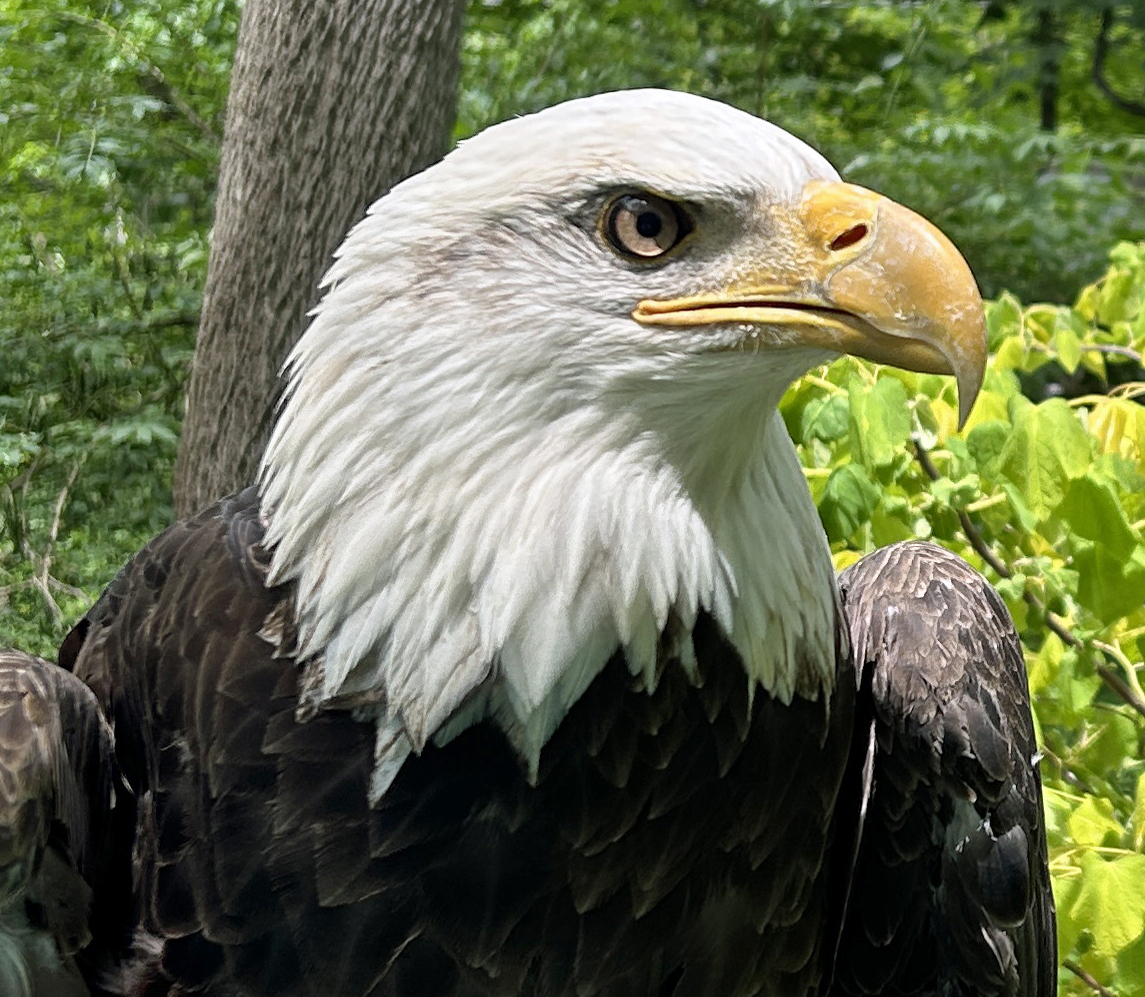
HATCH |
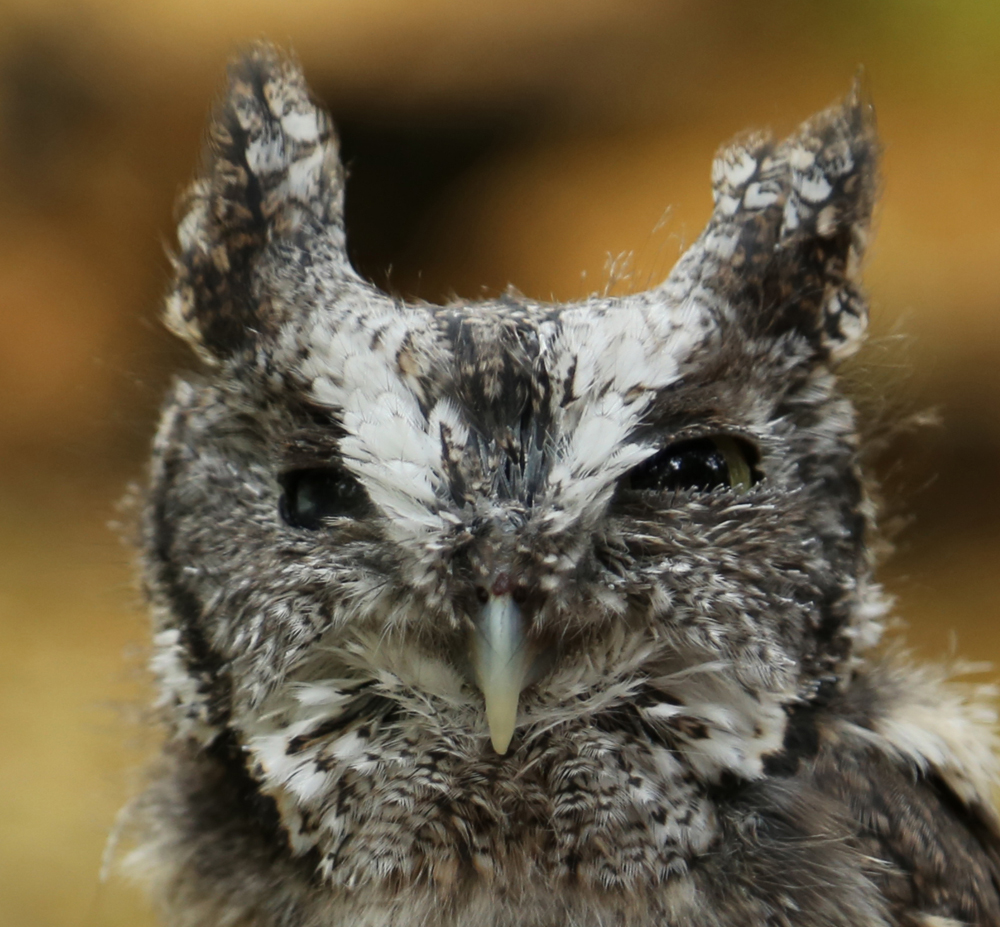
JADE |
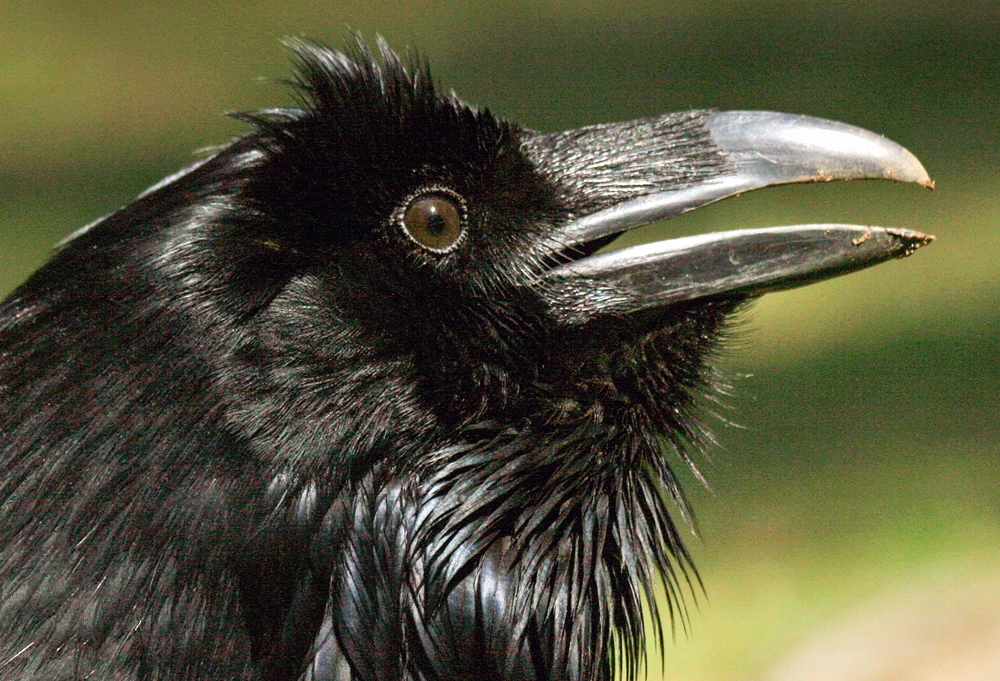
JULIAN |
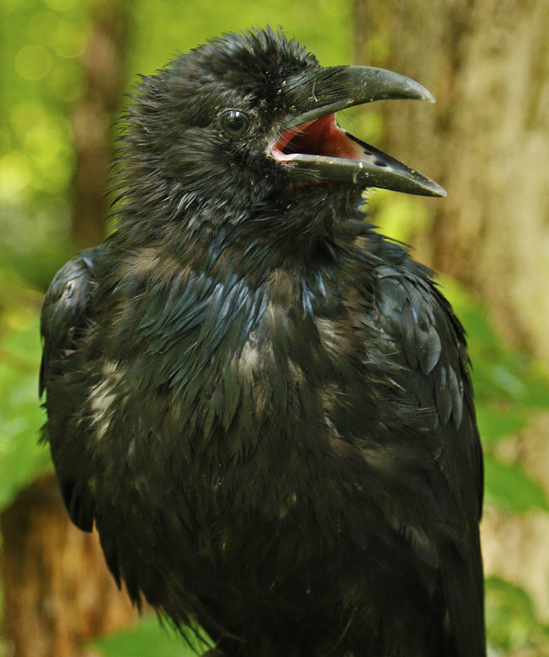
MAEVE |
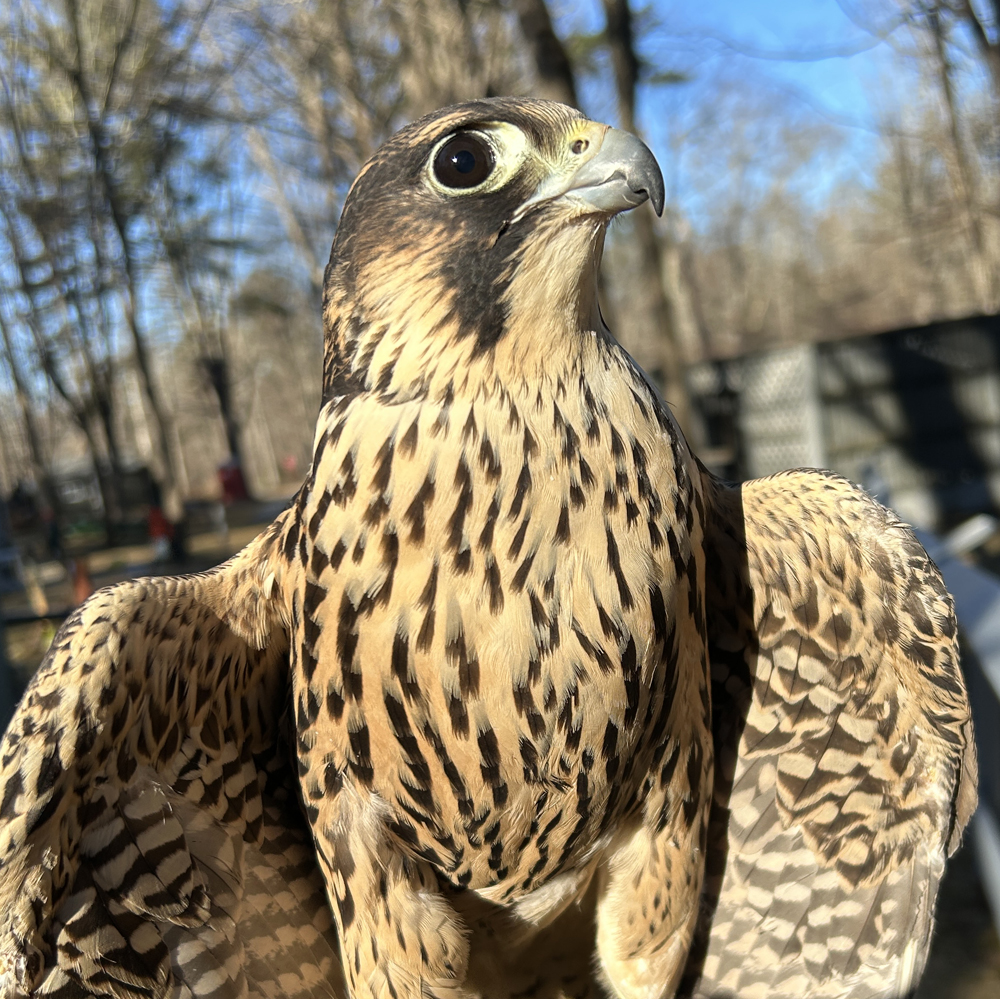
NOAH |

OAKLEY |
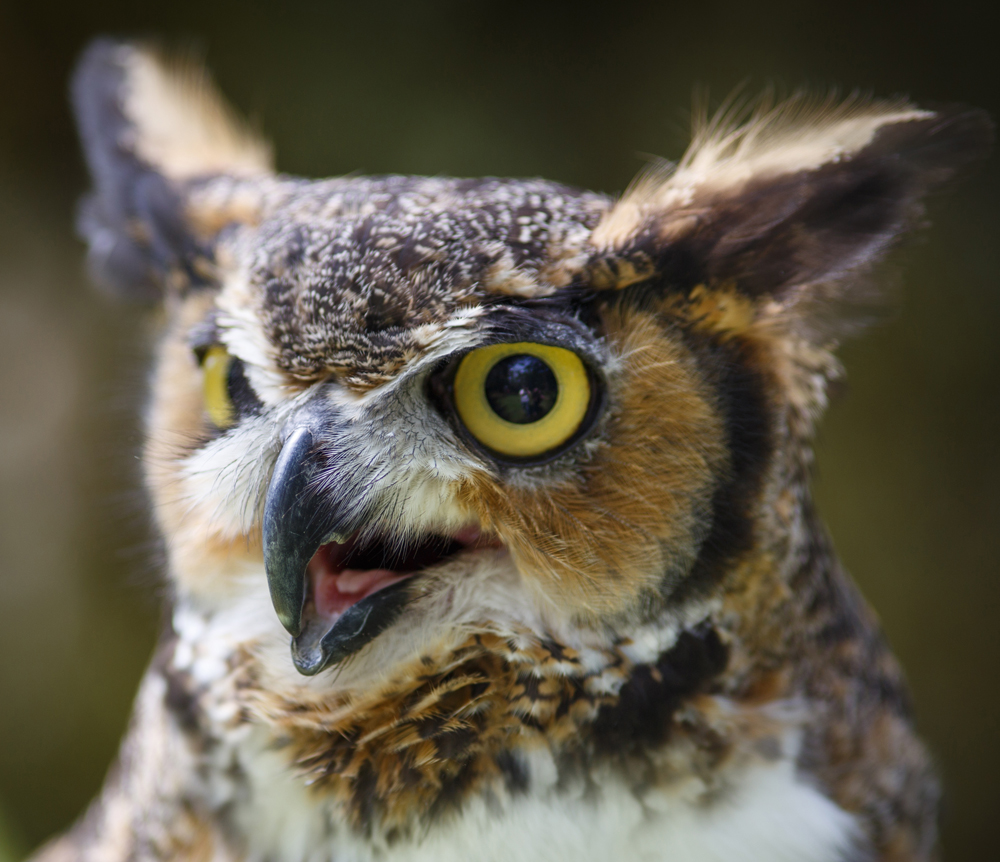
OSCAR |
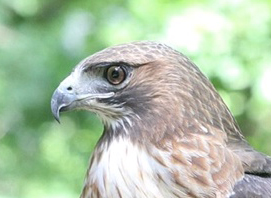
PATRICK |
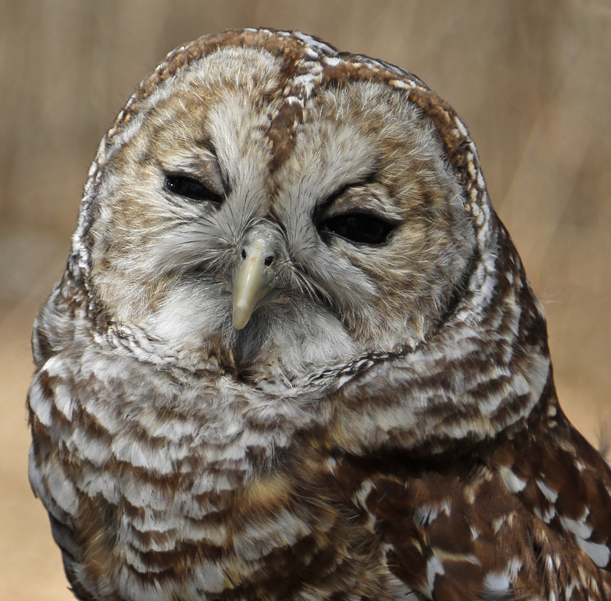
SILAS |
|
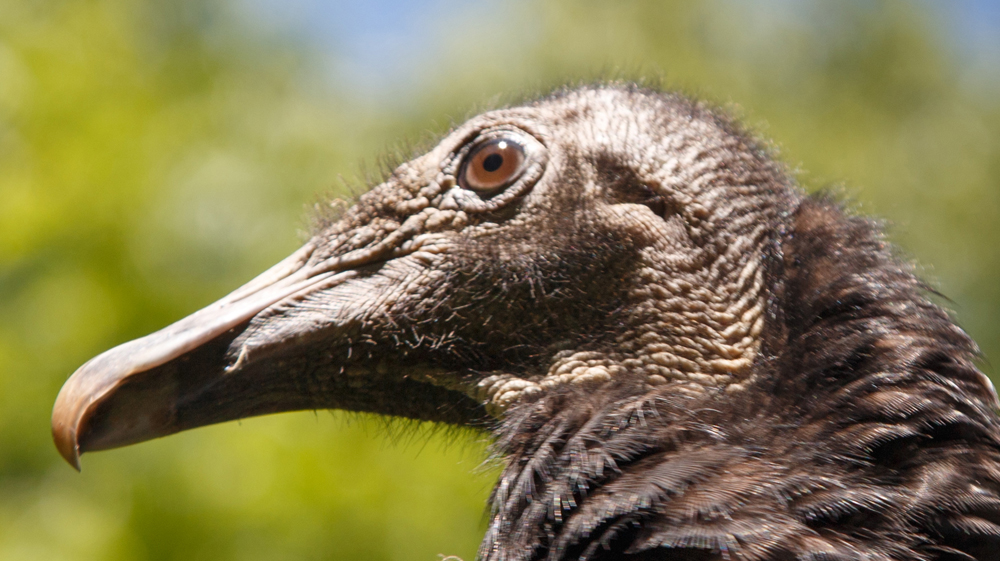
STEVIE |
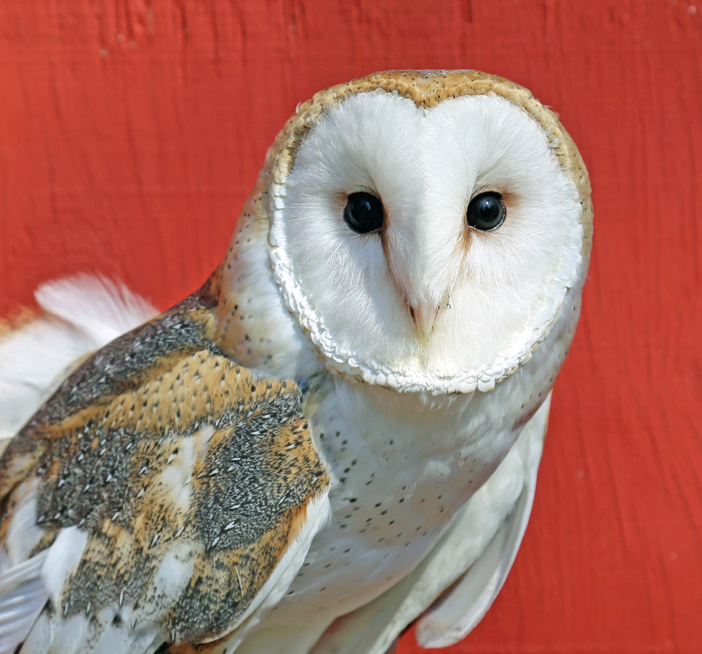
TYTON |
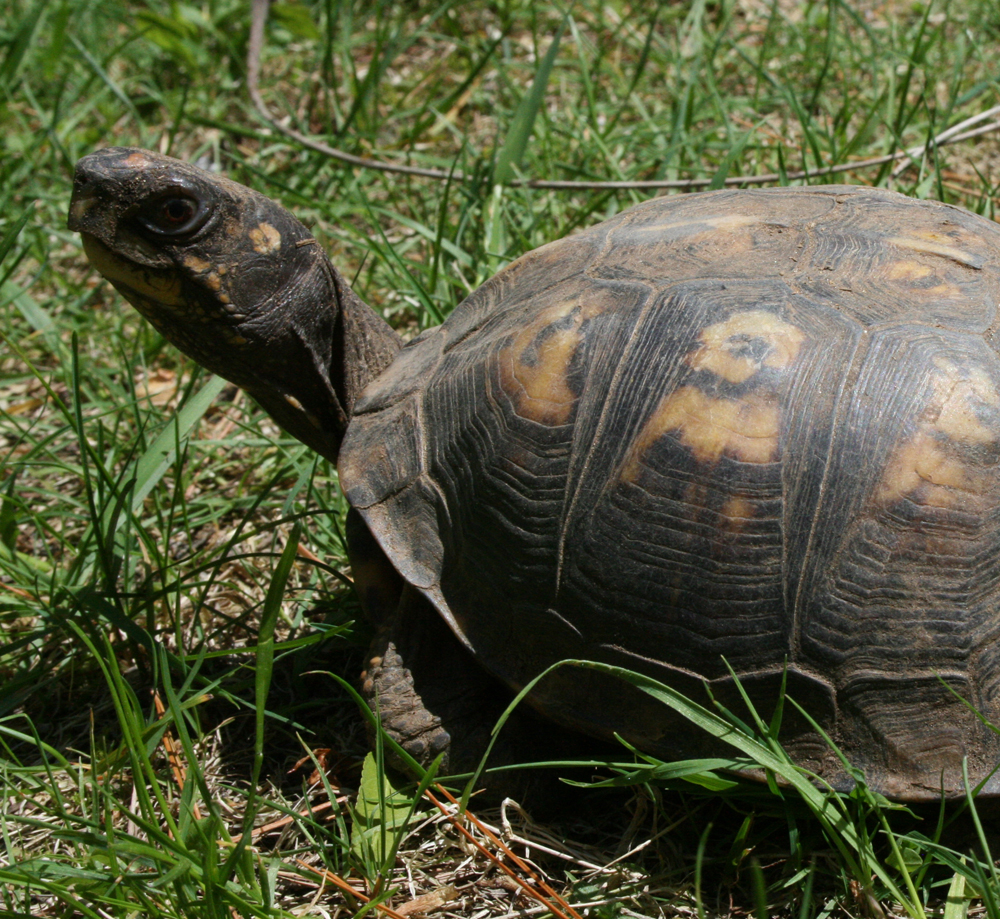
BEAMER |
|||||||

ADARACooper's Hawk | Accipiter CooperiiThe Cooper’s Hawk is fairly common in North America and Connecticut. It is a member of the accipiter family known for their broad rounded wings and very long tails. Look for flap-flap-glide flight style and long tails to identify them in the sky. They are often seen at bird feeders hunting song birds but will also eat small mammals like chipmunks and red squirrels. These birds are very good at flushing their prey out of thick vegetation and then chasing them down in the air. They are often mistaken for their smaller cousins – the Sharp-shinned hawk. Adara came to us in 2018 from Utah as a 1 year old bird. She was struck by a vehicle resulting in an injured wing (humerus) and does not fly well enough for release. We were able to tell Adara’s age by her juvenile plumage and the color of her eyes. Her name means “catches birds”. |
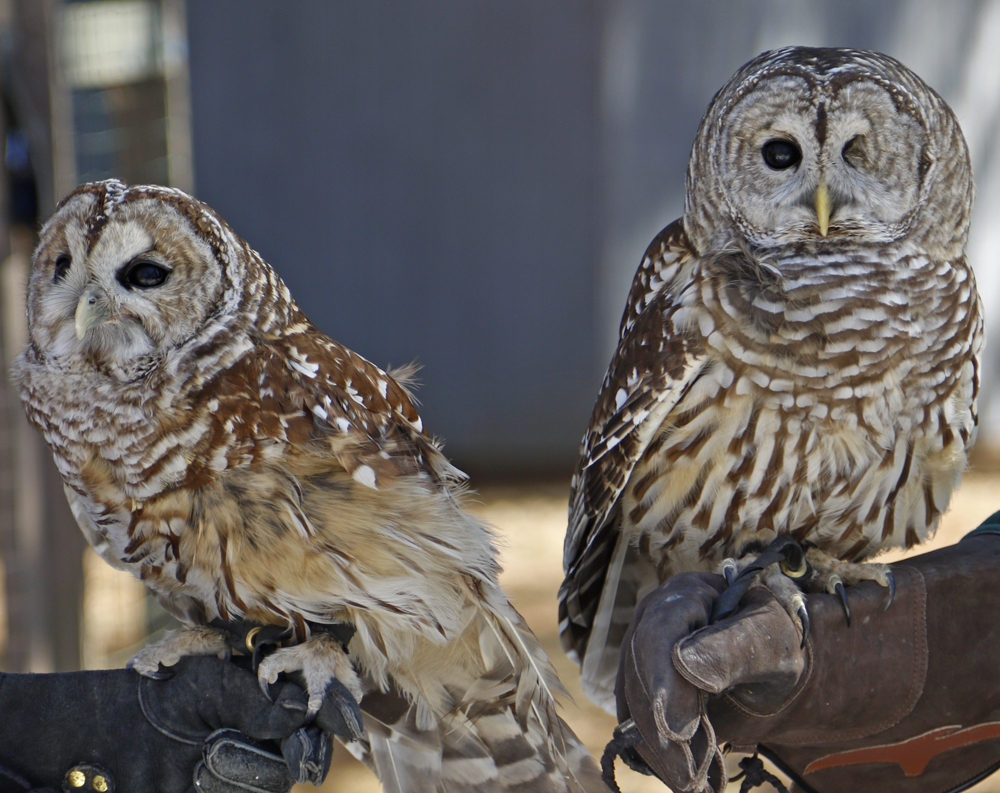
ASHA & SILASBarred Owl | Strix VariaBarred owls are a medium gray owl with white and brown horizontal barring that covers most of their body. They are round-headed with a whitish-brown facial disk with dark brown trim and, have dark brown eyes and a yellow-white beak. They live primarily in evergreen forests, usually near a swamp or pond. Barred owls along with all other owls have a serrated feather on the edge of their wing. This allows them to fly through the air in complete silence. Owls need to be quiet because they are nocturnal creatures. This means that they are more active at night. Barred owls are one of the most common types of owl in Connecticut and are also the most vocal. Their call can be heard in the day as well as at night and can sound like “Who who cooks for you.” Barred owls are one of the few owls that are likely to be active during the day. This means that they will call and maybe even move about during the day but they will save the hunting for when it gets dark. Asha came to us in 2018 as a 1 year old bird after being struck by a car in Danielson. As a result of her accident, she lost one of her eyes. Silas came to us in 2020 after being struck by a car. He sustained a wing injury resulting in permanent damage and he is no longer able to fly. |
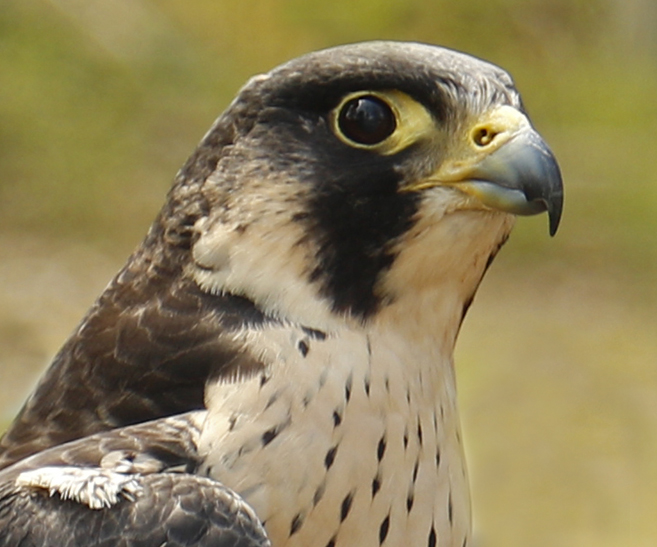
ATHENA Semi RetiredPeregrine Falcon | Falco PeregrinusPeregrine Falcons are the fastest animals on earth, reaching speeds close to 200 mph as they dive after their prey, which consists almost entirely of other birds. Peregrines were almost completely gone from much of the east coast of the U.S. due in large part to the pesticide DDT. Through captive breeding programs and reintroduction, they have made an extraordinary comeback. They have also adapted quite well to living in cities where they often nest on high rise buildings. Athena was found injured at Bradley International Airport in Windsor Locks, CT. Her right wing was abraded and missing primary feathers, which are crucial in a bird’s flight. In rehab we allowed her to go through a molt (losing old feathers and growing new ones). As the new primaries grew, they would break before reaching their full length. It was determined that there was probably some irreversible nerve and tissue damage to the wing and she would not be able to be released. Athena is one of our most sought after program birds, but we are announcing her semi retirement as of July 2024. At 17 she has some very common old age issues that raptors face, including cataracts. For this reason she will be limited in the amount of programs she is able to do. She is still a happy, content bird who waits eagerly and usually quite vocally for breakfast every day. |
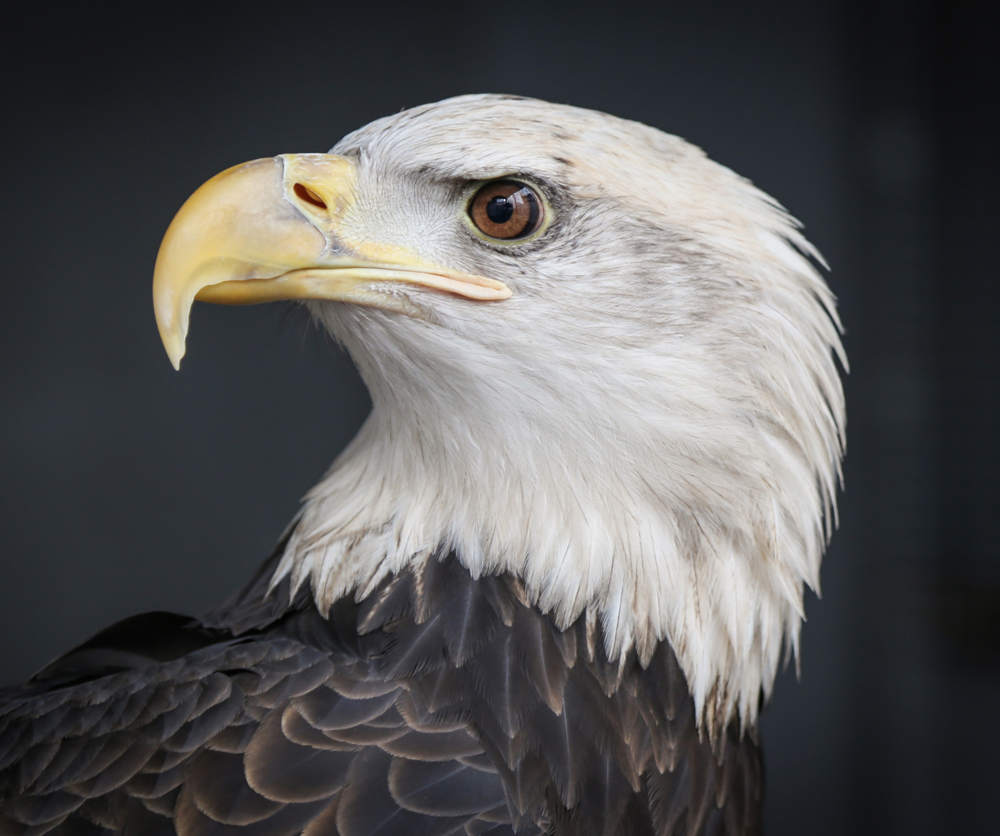
ATKABald Eagle | Haliaeetus LeucocephalusBald Eagles are the largest raptors nesting in Connecticut with males weighing up to 10 lbs. and females up to 12 lbs. with wingspans between six and seven feet. Adult Bald Eagles are easily identified by their large size and dark body with the distinct white head and tail. Young Bald Eagles look much different than the adults. In their first two years, young eagles are dark brown with white mottling and lack the white head and tail. They are sometimes mistaken for Golden Eagles, which are rarely seen in Connecticut. Young Bald Eagles begin to get the white head and tail in their third and fourth year, becoming completely white when they turn five years old. Bald Eagles were extirpated from Connecticut in the 1950s due largely to the pesticide DDT. Nesting Bald Eagles returned to Connecticut in 1992 and have been increasing in numbers ever since. As of 2018 there are now 55 known nesting pairs in the state. Bald Eagles build very large nests, usually near a body of water. They prey mainly on fish but will also take a wide variety of prey, including mammals and birds, and will also scavenge on carrion. Atka is a male eagle who came to us in 2011 as a 1 year old from Washington state. He was found with an injured right wing which prevents his release. |
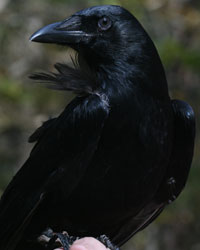
CORBINAmerican Crow | Corvus BrachyrhynchosCrows are a very common bird throughout North America. They are very social and have a unique family structure. Often siblings from previous years will help in nest building and the raising of the next generation. During the winter, crows will often gather in large communal roosts numbering in the thousands. Crows can be found in almost any habitat—from woodlands to shorelines and from cities to suburbs, and they have adapted very well to human activity. Crows are very opportunistic and will eat anything. They are also intelligent birds with the ability to recognize one person from another. Some species of crows have been known to use crude tools, such as sticks, to forage for food. Corbin came to us in the spring of 2011 when he was taken from his nest by a hawk. Corbin’s rescuer saw his family mob the hawk until he released Corbin into her backyard. Corbin’s shoulder was broken too severely for him to be released. |
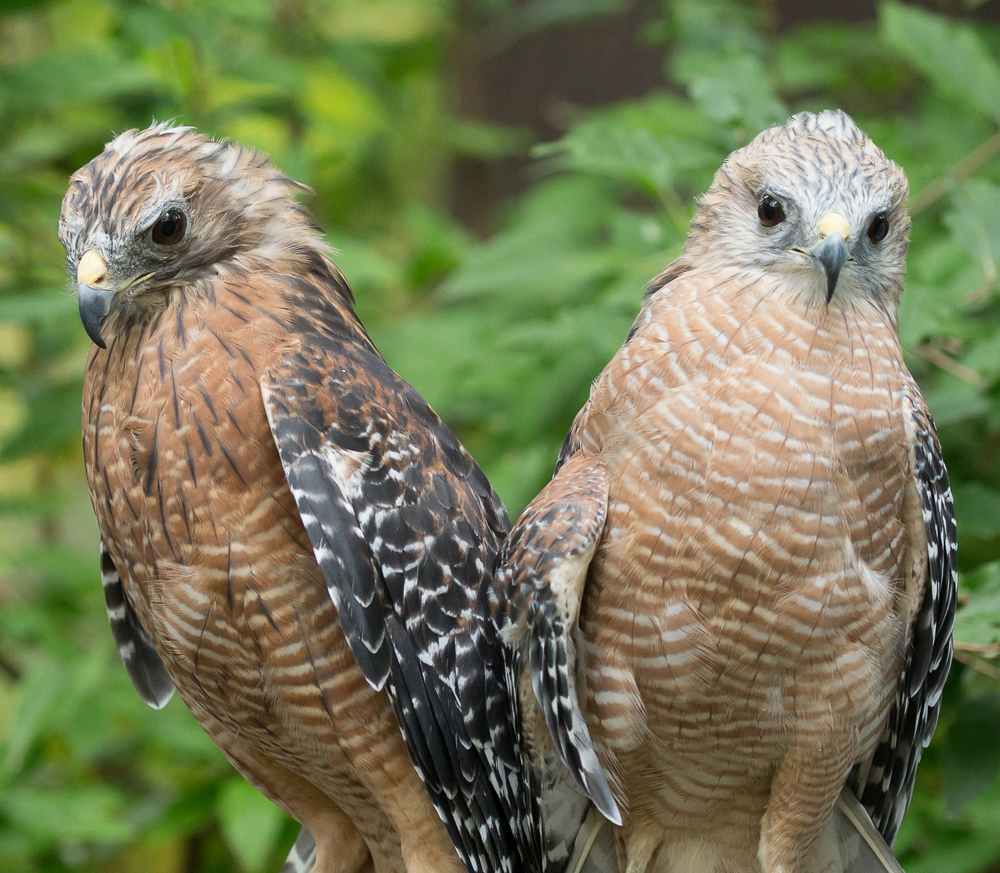
CYPRESS & CESSNARed-Shouldered Hawk | Buteo LineatusRed-Shouldered Hawks are a common hawk in Connecticut. They are related to the larger Red-Tailed Hawk and the smaller Broad-Winged Hawk. Red-Shoulders prefer to live in woodlands near water, and they feed on small mammals, birds, snakes and amphibians. Red-Shoulders can be identified by their orange barred chest and checkerboard-like markings on their wings; they also have a red shoulder patch and a narrow black and white banded tail. In flight, they have a distinctive white crescent mark near the tips of their wings. Red-Shoulders are also very vocal with a piercing kee-ah call. Cypress was hit by a car in Florida, which resulted in a permanent injury to his right wing. He first came to Connecticut under the care of Teresa Kramer of Canton Raptor Care and then was transferred to Horizon Wings in the spring of 2012. Red-Shouldered Hawks from Florida are slightly smaller and paler in color than northern birds. Cessna was injured in Florida in 2014. She was struck by car resulting in severe feather damage on all of the feathers on the tip of one of her wings. These feathers no longer grow in properly and break very easily. Cessna originally went to Hope Douglas of Wind over Wings in Dresden, ME. When Hope retired in the summer of 2017 Cessna was transferred to Horizon Wings and now is a permanent resident. |

DAKOTA & PATRICKRed-Tailed Hawk | Buteo JamaicensisRed-Tails are very common, and adult birds can easily be identified by their striking red tail. Red-Tails also have a “belly-band” of dark feathers across the lower portion of their chest. In some birds this marking is very distinctive; in others it is just a few dark spots. Dakota was hit by a car in 2006. Her left wing and leg were broken. Her leg healed well, but her wing did not. We know Dakota’s age as she still had her first-year juvenile plumage when she was hit. Once raptors molt in their adult feathers, it is difficult, if not impossible, to determine their age. Patrick came to us on Saint Patrick's Day in 2011 after being hit by a car, leaving him blind in his right eye. This is a very common injury to birds of prey. Approximately two-thirds to three-quarters of the birds we get into rehab are struck by cars. Patrick is a great companion to Dakota, who always seems more at ease when she has other birds with her. |
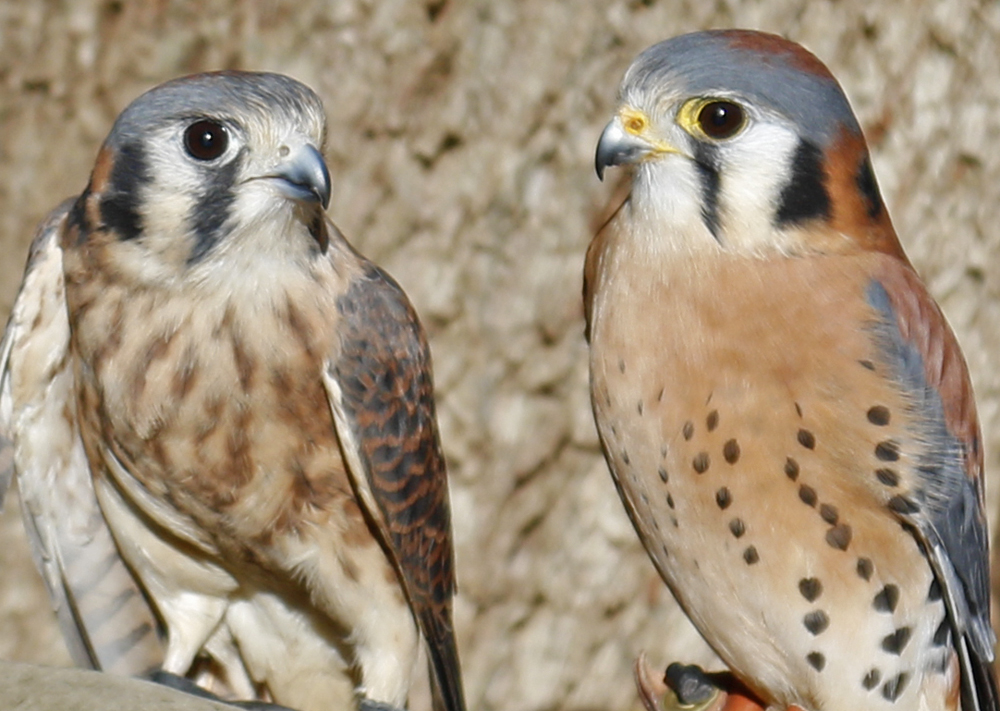
BREEZE & FINNAmerican Kestrel | Falco SparveriusKestrels are a member of the Falcon family. They are the smallest falcons living in North America, and are currently on the special concern list in Connecticut as their numbers have seen a dramatic decrease in the last decade. Some of the theories for this decrease are loss of habitat (Kestrels prefer open areas such as farmland), pesticide use (Kestrels prey on many types of insects), and predation by larger birds of prey (there is an increasing Cooper’s Hawk population in Connecticut). Unlike many raptors the male and female kestrel are marked quite differently. Finn came to us in summer of 2016 from eastern Connecticut with a severe head trauma. Due to the severity of his injury and his young age, he became imprinted on humans and is not releasable. Breeze (AVAILABLE SOON) came to us the winter of 2020 as a three year old from Wildlife Rehabilitation Center of Northern Utah. She is a female kestrel who has a permanent injury to her right wing that keeps her from being a fully flighted bird. |

HATCH HOPKINSBald Eagle Haliaeetus LeucocephalusBald Eagles are the largest raptors nesting in Connecticut with males weighing up to 10 lbs. and females up to 12 lbs. with wingspans between six and seven feet. Adult Bald Eagles are easily identified by their large size and dark body with the distinct white head and tail. Young Bald Eagles look much different than the adults. In their first two years, young eagles are dark brown with white mottling and lack the white head and tail. They are sometimes mistaken for Golden Eagles, which are rarely seen in Connecticut. Young Bald Eagles begin to get the white head and tail in their third and fourth year, becoming completely white when they turn five years old. Bald Eagles were extirpated from Connecticut in the 1950s due largely to the pesticide DDT. Nesting Bald Eagles returned to Connecticut in 1992 and have been increasing in numbers ever since. As of 2018 there are now 55 known nesting pairs in the state. Bald Eagles build very large nests, usually near a body of water. They prey mainly on fish but will also take a wide variety of prey, including mammals and birds, and will also scavenge on carrion. Hatch came to us as a 4 month old Bald eagle in the summer of 2018 from Kensington CT. He was injured shortly after fledging when he apparently became caught in the fence surrounding the hatchery where he was found. He was rescued by volunteers Jeanne Wadsworth and Sandy Vinton who then brought him to Kensington Bird and Animal Hospital. In order to save this magnificent bird the difficult decision was made to remove the tip of his right wing, which had been severely broken when caught in the fence. He was given the name "Hatch" by his rescuers Jeanne and Sandy, and by the wonderful Doctors and staff of KBAH. The 2nd half of his name is in honor of a dear friend Don Hopkins, who passed away in 2018. Don started the Bald Eagle Study Group in Connecticut and was instrumental in keeping track of the Bald Eagle population in the state. |
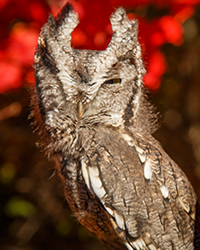
JADEEastern Screech Owl |Megascops AsioScreech owls get their name from the wailing call they make, but most often their call is a soft trilling sound that is similar to the whinny of a horse. Screech owls nest in cavities in trees and are extremely hard to see although are probably one of the most common raptors in CT. Red and gray forms will nest together and sometimes have young that are a brownish color. Screech owls have asymmetrical hearing, meaning one ear is larger and sits up higher on their head. This helps them to locate their prey by listening before they look for it. Jade is a gray form eastern screech owl. Jade was presumed to be hit by a car when he was found in a driveway huddled under a car on a rainy morning. The car strike damaged one eye severely enough that it had to be surgically removed. The remaining eye has limited vision which leaves him unable to be released. |
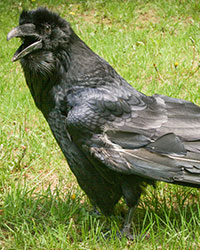
JULIANCommon Raven | Corvus CoraxJulian came to Horizon Wings in 2005. He was found by a hiker in Vernon, CT, with a severely broken and infected wing, which left him unable to ever fly again. Ravens are in the same family as crows (Corvids), but they are much larger then crows and can be identified by their wedge-shaped tail in flight (crows' tails are rounded). Ravens also have much thicker and heavier beaks with hair-like feathers covering the beak near their face. Their call is more of a croaking sound as opposed to the distinct caw of a crow. Ravens are becoming more and more common in Connecticut and typically like to nest on ledges and cliff faces. They are extremely intelligent birds with actual problem-solving abilities (not just trial and error). We know Julian was less than a year old when he came to us as the inside of his mouth was pink, which darkens to black as the bird matures. Julian is currently a display bird at Horizon Wings until he can be trained as a program bird. Julian has also picked up a few phrases he has heard us say to him. Here are 2 videos What’s Up! and Who’s a good bird! |

MAEVECommon Raven | Corvus CoraxMaeve is a human imprint. She was raised in an apartment after falling from her nest at a young age. She was eventually put outside to rejoin her family but had already imprinted on her human family. She was found chasing people and begging for food. She was not fully flighted and would not have been able to survive on her own. Ravens are in the same family as crows (Corvids), but they are much larger then crows and can be identified by their wedge-shaped tail in flight (crows' tails are rounded). Ravens also have much thicker and heavier beaks with hair-like feathers covering the beak near their face. Their call is more of a croaking sound as opposed to the distinct caw of a crow. Ravens are becoming more and more common in Connecticut and typically like to nest on ledges and cliff faces. They are extremely intelligent birds with actual problem-solving abilities (not just trial and error). |

NOAH Coming SoonPeregrine Falcon | Falco PeregrinusPeregrine Falcons are the fastest animals on earth, reaching speeds close to 200 mph as they dive after their prey, which consists almost entirely of other birds. Peregrines were almost completely gone from much of the east coast of the U.S. due in large part to the pesticide DDT. Through captive breeding programs and reintroduction, they have made an extraordinary comeback. They have also adapted quite well to living in cities where they often nest on high rise buildings. Noah is a young Peregrine falcon. He was initially brought to A Place Called Hope last year after he was discovered with an injured wing. Unfortunately, this injury has left him only partially flighted making him non- releasable. |
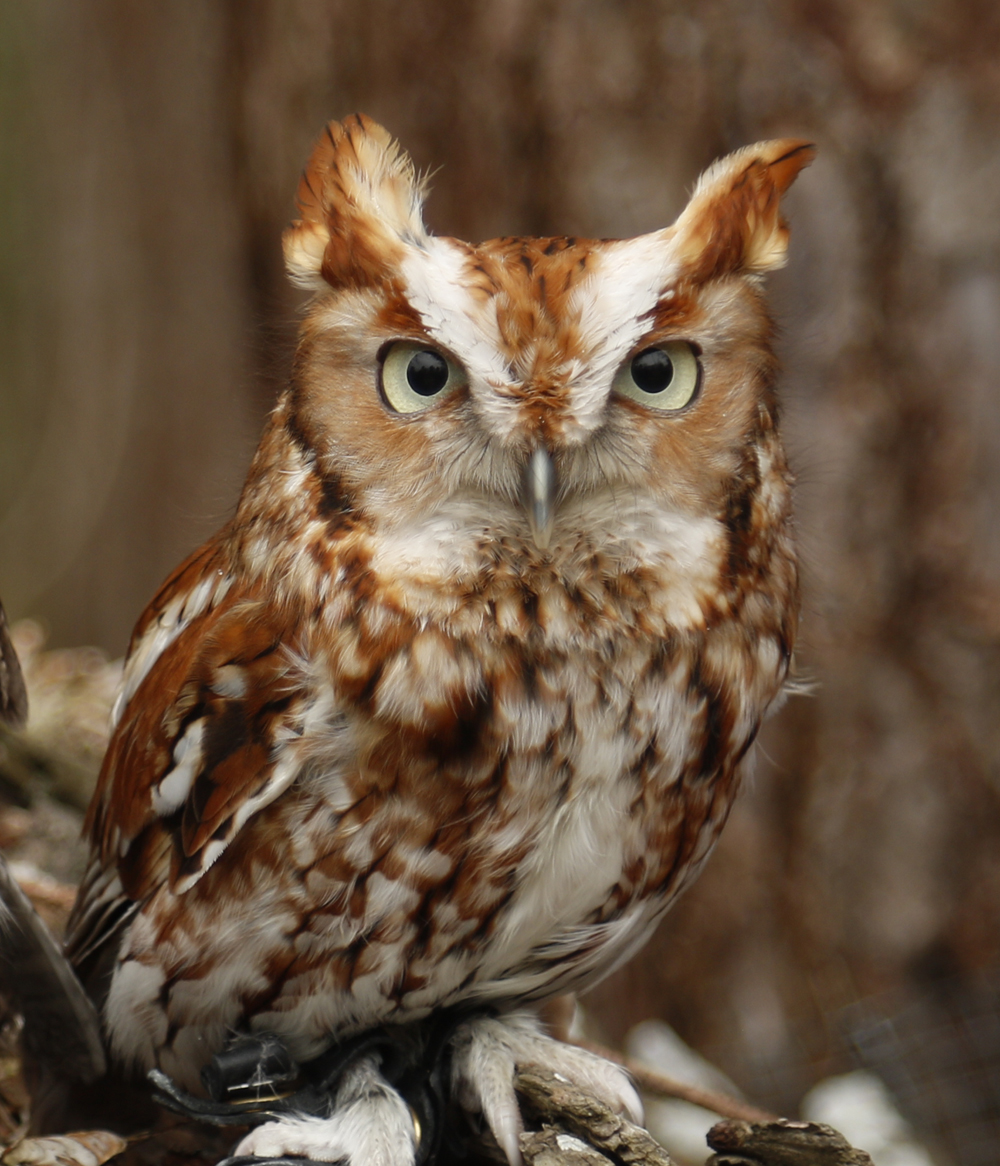
OAKLEYEastern Screech Owl |Megascops AsioScreech owls get their name from the wailing call they make, but most often their call is a soft trilling sound that is similar to the whinny of a horse. Screech owls nest in cavities in trees and are extremely hard to see although are probably one of the most common raptors in CT. Red and gray forms will nest together and sometimes have young that are a brownish color. Screech owls have asymmetrical hearing, meaning one ear is larger and sits up higher on their head. This helps them to locate their prey by listening before they look for it. Oakley and her siblings were hand raised from a very young age after their nest tree was taken down. Despite being given directions to take them to the local Audubon where they would have been fostered into other nests, the owlets were given to the finder's friend who raised them for 2 months before turning them over to the Audubon. Being raised by humans, and played with by children, these birds imprinted upon humans and are not releasable. |

OSCARGreat-Horned Owl | Bubo VirginianusOscar came to Horizon Wings from another rehabilitator after he was struck by a garbage truck. Oscar suffered a broken shoulder which left him unable to fly. Great-Horned Owls are the largest owls nesting in Connecticut. In the wild, an adult Great-Horned has few natural predators. They are very powerful birds and can take an extremely wide variety of prey items, including mammals as large as skunks. Great-Horned Owls nest early in the year (February to March) and will quite often take over a nest built by another pair of birds, such as a Red-Tailed Hawk. |
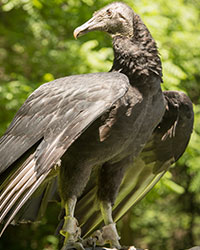
STEVIE RAYBlack Vulture | Coragyps AtratusBlack vultures are in the same family as turkey vultures. They are large black birds often seen soaring in search of food, which consists primarily of carrion. Black vultures can be distinguished from turkey vultures in flight by the square white panel at the end of their wings (turkey vultures have silvery-white trailing edges on their wings). Black vultures also have much shorter tails, giving them the appearance of a flying wing. Black vultures are more common in the southeastern part of the U.S. but are becoming more common in the northeast due in part to climate change. Stevie Ray was found as a nestling and had to be hand fed as he would not eat on his own. He became imprinted on his handlers and therefore is not a good candidate for release. He was transferred to Horizon Wings in the fall of 2012. |

TYTONBarn Owl |Tyto AlbaBarn Owls are found on every continent except Antarctica. They are currently on the endangered list in Connecticut mainly due to changes in land use. Barn Owls prefer open farmland where they hunt the fields for small mammals. A study done by the Connecticut Department of Environmental Protection found that a pair of Barn Owls with six young can eat as many as 1,000 rodents in a nesting season. They are able to locate their prey using only their sense of hearing. Barn Owls are easily identified by their white chest and heart-shaped facial disk. Females are larger and have heavier speckled chests. Their call is a long hissing shriek. Tyton came to Horizon Wings in April of 2018 as a young adult from Utah. He was presumably struck by a car and suffered an injury to his shoulder/coracoid which left him unable to fly. |

BEAMER - Our Ambassador & MascotEastern Box TurtleBeamer came to Horizon Wings approximately 12 years ago, when Mary-Beth was working at Bolton Veterinary Hospital. Beamer was brought into the hospital suffering from a severe upper respiratory infection. During her treatment, it was discovered she was missing a hind leg, which made it difficult for her to get around. To make it easier on her, Dr. Zyra came up with the idea of making a prosthesis from a Lego trike. The idea worked, and Beamer soon became a wonderful ambassador and mascot for Horizon Wings. Box Turtles are on a special concern list in Connecticut due to loss of habitat. Their habitat includes woodlands, swamps and grassy meadows. They get their name from their ability to close themselves up like a box when threatened. They have been known to live 50 years or more. |
SITE DESIGN BY Sandy Vinton
